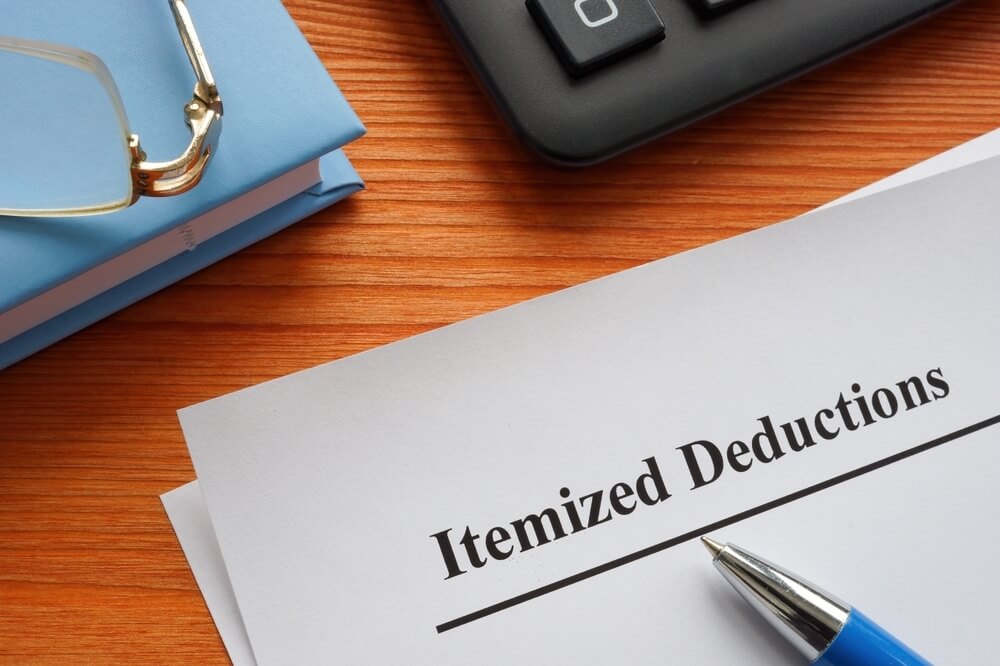Itemized deductions are a powerful tool for individuals and businesses seeking to reduce their taxable income and optimize tax liabilities. By understanding the intricacies of itemized deductions and leveraging eligible expenses, taxpayers can unlock significant tax savings and enhance their overall financial well-being.
What is Itemized Deduction?
Itemized deductions are specific expenses that individuals or businesses can claim on their tax returns to reduce their taxable income. These deductions encompass a wide range of expenses, including medical costs, charitable contributions, mortgage interest, state and local taxes, and business-related expenses.
Taxpayers have the option to either itemize their deductions or claim the standard deduction. The standard deduction is a fixed amount that reduces taxable income, while itemized deductions are based on actual expenses incurred. By comparing the total itemized deductions to the standard deduction, taxpayers can determine the most advantageous option for their specific situation.
When individuals or businesses itemize deductions, they list and tally up all eligible expenses to calculate their total itemized deduction amount. This total is then subtracted from the adjusted gross income (AGI) to determine the total taxable income. By comparing the total itemized deduction amount to the standard deduction, taxpayers can choose the option that results in the most significant tax savings. It’s important to note that tax deductions reduce taxable income, while tax credits directly lower the tax bill.
Benefits of Itemized Deductions
Greater Tax Savings: Itemizing deductions can result in higher tax savings compared to claiming the standard deduction, especially for taxpayers with significant eligible expenses.
Comprehensive Financial Insights: Tracking and categorizing expenses provides valuable insights into spending patterns, aids in budgeting, and supports informed financial decision-making.
Tax Planning and Compliance: Maintaining detailed records of itemized deductions helps in tax planning, ensures compliance with IRS regulations, and facilitates smooth tax filing processes.
Types of Itemized Deductions
Medical Expenses: Includes costs related to healthcare, such as doctor visits, prescriptions, medical supplies, and even certain travel expenses for medical purposes. To qualify, medical expenses must exceed 7.5% of the taxpayer’s AGI.
Charitable Contributions: Donations made to qualified charitable organizations, such as churches, nonprofits, and educational institutions, are eligible for deduction. Taxpayers can deduct up to 60% of their AGI for cash contributions and up to 30% for non-cash contributions.
Mortgage Interest: Interest paid on a mortgage for a primary or secondary residence can be deducted, subject to certain limitations. The deduction is limited to interest on up to $750,000 of mortgage debt for single filers and married couples filing jointly, and $375,000 for married couples filing separately.
State and Local Taxes: Taxpayers can deduct state and local income taxes or sales taxes, up to a combined total of $10,000 ($5,000 if married filing separately).
Business Expenses: Individuals who are self-employed or own a business can deduct eligible expenses related to their business operations, such as rent, utilities, office supplies, and professional development costs.
Strategies for Maximizing Itemized Deductions
Meticulous Record-Keeping: Maintain detailed records of all deductible expenses, including receipts, invoices, and documentation. Organize expenses into relevant categories to streamline the deduction process.
Timing of Expenses: Consider the timing of eligible expenses to maximize deductions. For example, prepaying certain expenses, such as mortgage interest or property taxes, can be advantageous in some cases.
Leveraging Tax Credits: Utilize available tax credits with itemized deductions to further reduce tax liabilities. Tax credits directly reduce the amount of tax owed, while deductions lower taxable income.
Consulting with Tax Professionals: Seek guidance from tax professionals, such as certified public accountants (CPAs) or enrolled agents, to ensure compliance with tax laws and regulations while maximizing tax benefits. Tax professionals can provide personalized advice based on individual circumstances and help navigate the complexities of the tax code.
In conclusion, itemized deductions are a valuable tool for individuals and businesses seeking to reduce their tax burden and optimize their financial well-being. By understanding the types of deductions available, maintaining meticulous records, and leveraging tax planning strategies, taxpayers can unlock significant tax savings and gain valuable insights into their financial activities. Remember, consulting with tax professionals can provide tailored guidance and ensure compliance with ever-changing tax laws and regulations.

